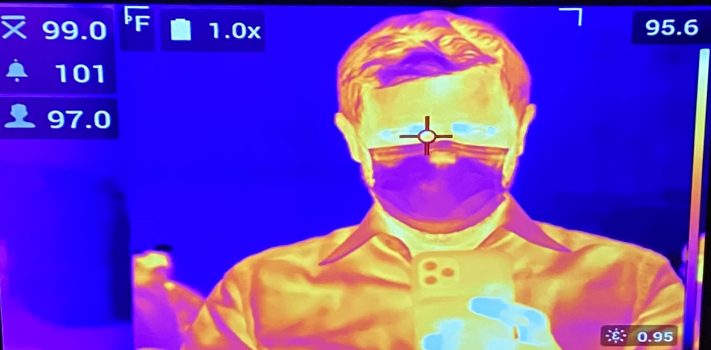“Despite a largely rural population and relatively little international travel, the bubonic plague wiped out about a third of Europe’s population in the mid-14th century. Today, over half of the world’s seven billion people live in cities visited daily by international travelers. We are more urbanized and densely packed, sustained by food and water that arrives from distant locations, relying on delivery systems and economic operations that may shut down if there is a lethal contagious virus spreading and people understandably do not report to work. Even those with the courage to face the risk may change their mind when they realize they could bring a fatal virus home to their families.
Those that do keep working, medics and police in particular, are likely to catch the virus. We should expect that most economic activity, public services, production of essential goods, and transportation may cease. To minimize inventory costs, businesses, even hospitals, now have “just-in-time” delivery of supplies, sourced from lowest-cost providers on the other side of the world. Even if your local trucker decides to continue working, with multiple long-distance suppliers and shippers involved in moving foodstuffs, a contagious pandemic would certainly disrupt the flow of essential goods. Panic-buying and hoarding will add to the problem of getting food to the population. How long will our public water supplies continue functioning when maintenance personnel fail to report for work? Our highly interdependent, just-in-time delivery economy is very vulnerable to disruptions. Nassim Nicholas Taleb, an expert in risk and thinking about rare events, points this out: “Our connected world appears to be more efficient. But when there is a disturbance, the setback is much harder to handle. Not only are we building riskier systems, but also the risks involved in failure are a lot larger.”
When the availability of food and water is threatened, widespread marauding may occur. In 1977, New York City suffered a lightning strike that caused a power failure for one night. Over 3,000 arrests were made for looting, 400 policemen were injured, 500 fires were started. In 2005, after Hurricane Katrina, looting rapidly spread throughout New Orleans, often in broad daylight and in the presence of police officers. One third of New Orleans police officers deserted their posts. Given the example of these and other, relatively small disasters, what should we expect in the event of the far more serious scenario of a deadly viral pandemic? Pandemonium.” – Drew Miller, from his prescient The American Interest article titled The Age of Designer Plagues, September 12, 2016.











1) Kyle Harper in “The Fate of Rome” notes that the Antonine (smallpox?) and Cyprian Plagues destroyed the Roman Empire because the Roman population was far more concentrated in cities than were her rivals — hence, suffered much greater population and economic damage.
2) While I can appreciate that some may consider our urban areas to be burdens, we would suffer similar loss of economic –hence, military — power if a similar plague hit us. Or maybe I should not say “if” given the China virus.
JWR… An outstanding Quote of the Day. It should speak with clarity to every member of the SB community. It will be wise for all of us to become well versed in the language of biological warfare so that we can take measures to stop biological assaults, and survive them when they get through those protective measures.
I am my ‘first responder’.
I decided this a half-century ago after making an emergency! telephone call and the resultant waiting for the arrival of TheGovernmentAgents.
Real life can be tough on untested beliefs.
IE: Stay Away From Crowds ~ Remus …… Nuff said…